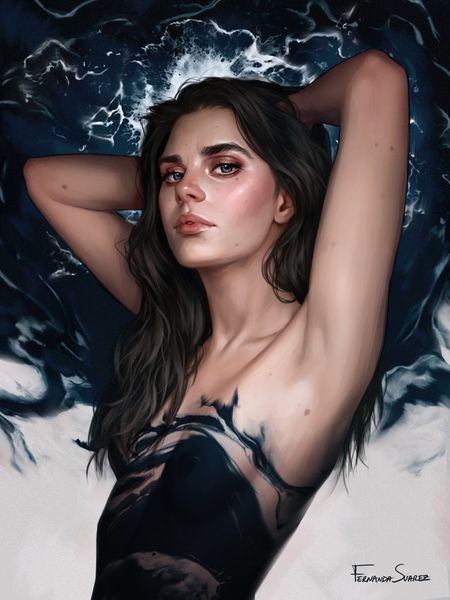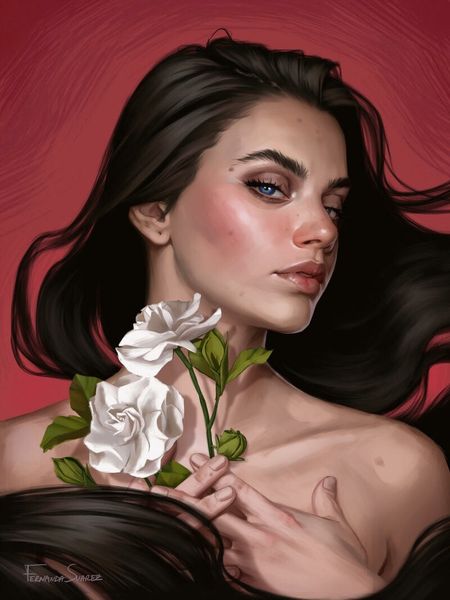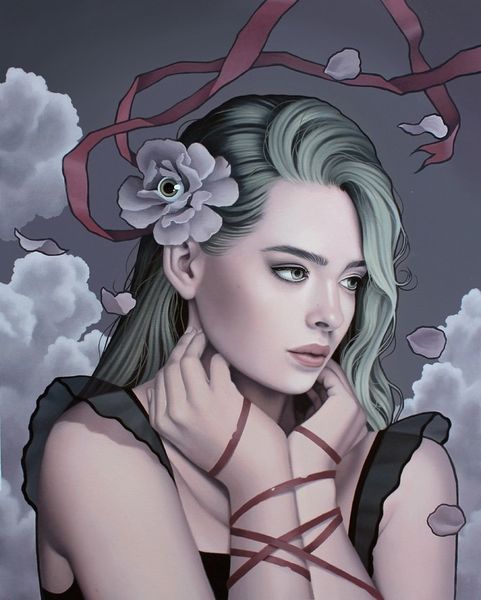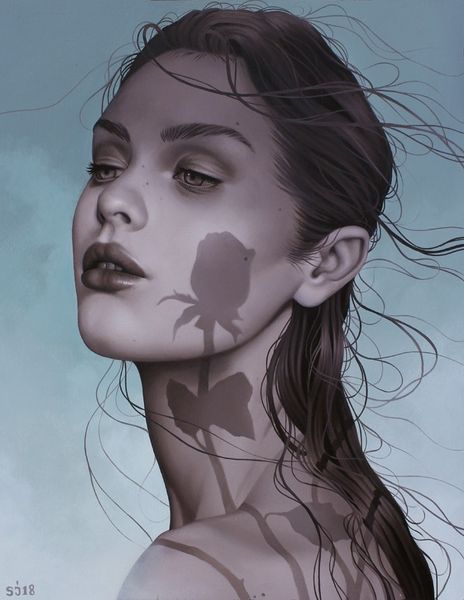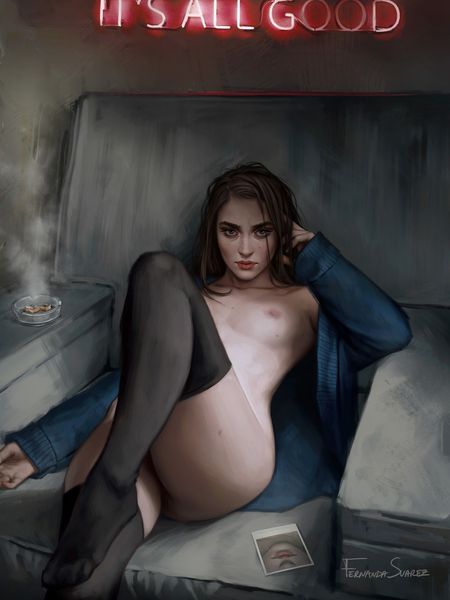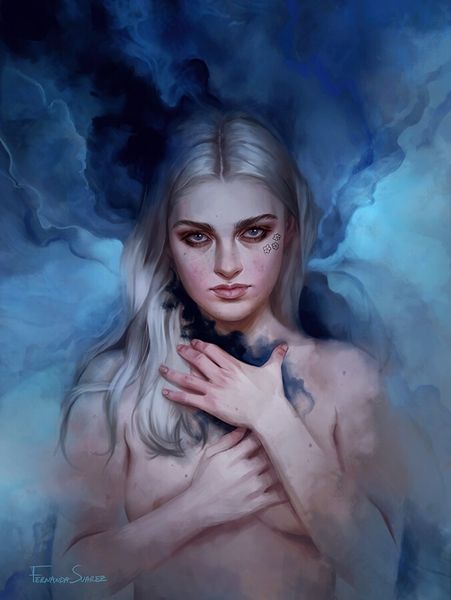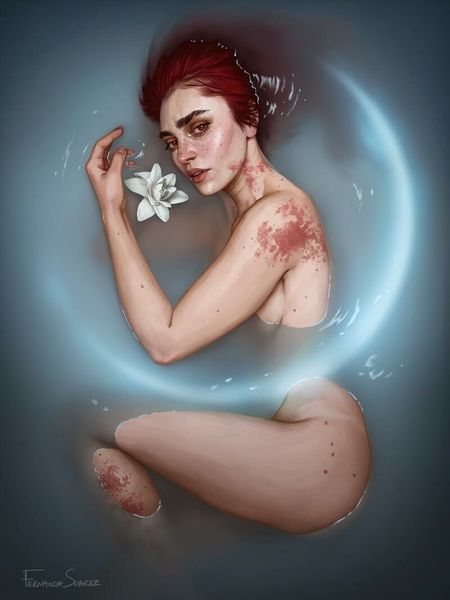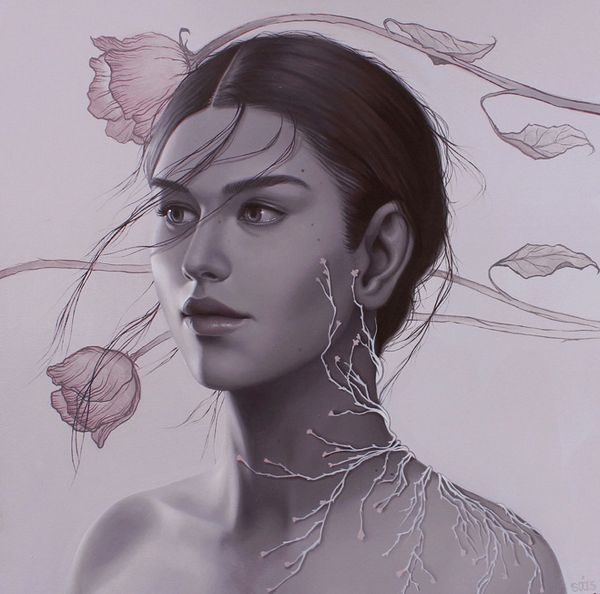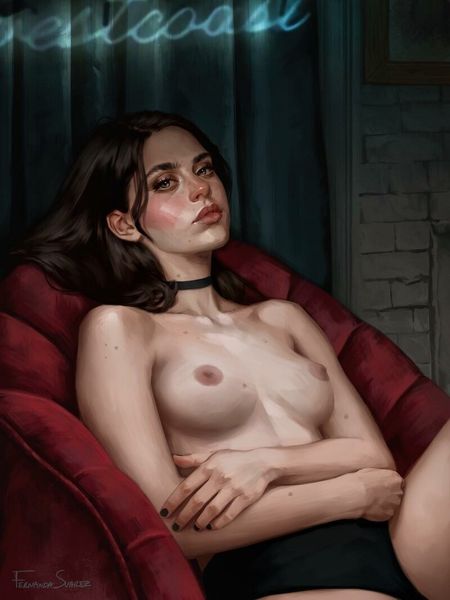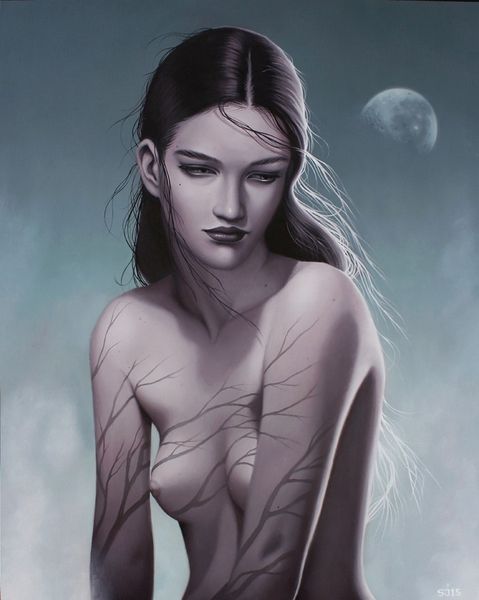
painting, acrylic-paint
#
portrait
#
painting
#
acrylic-paint
#
figuration
Copyright: Modern Artists: Artvee
Editor: This is "Flying to the moon again" by Fernanda Suarez, it appears to be an acrylic painting, though undated. The first thing that strikes me is the woman's gaze - it feels heavy with a melancholic sort of beauty. What do you see in this piece? Curator: I see echoes of Ophelia, the Shakespearean character associated with madness and drowning amidst flowers. Notice how Suarez positions the woman - supine, surrounded by blooms, but the flower held in her mouth isn't natural or serene. It's a symbol, almost a silencing. What does that suggest to you about feminine representation? Editor: That's a powerful reading. It definitely shifts how I perceive the flower from something pretty to a symbol of forced quiet. The painting style itself, quite modern, but drawing upon historical tragic figures... is she referencing something specific? Curator: Perhaps less a specific reference and more an invocation of a visual language. Consider how Pre-Raphaelite painters like Millais used floral imagery and poses to explore themes of female fragility. Suarez, through her modern lens, subverts the idea of the passive female victim. Her gaze, as you mentioned, is knowing, even challenging. Are we looking at a victim or someone reclaiming agency? Editor: That makes me think about the title – "Flying to the Moon Again." Maybe it is a reference to escaping earth. To change, but not quietly or in tragedy. It seems as if that challenging stare acknowledges a wish to escape and reinvent oneself. Curator: Precisely. The moon, as a symbol, often embodies change, cycles, and the subconscious. Combining it with her knowing look allows Suarez to reclaim her power rather than surrendering to madness. Do you see the colors as symbols in any way? Editor: Yes, especially that intense blue amidst otherwise warmer, fleshier tones. Blue can mean so many things, like sadness or clarity... Curator: Or escape, like flying to the moon. And sometimes just to note: escaping sadness is its own victory. Editor: I see. It feels less melancholy now and more like a quiet strength, looking toward change. I would not have come to that alone. Thank you! Curator: My pleasure. Symbolism shifts over time; interpreting art is like a dance.
Comments
No comments
Be the first to comment and join the conversation on the ultimate creative platform.
